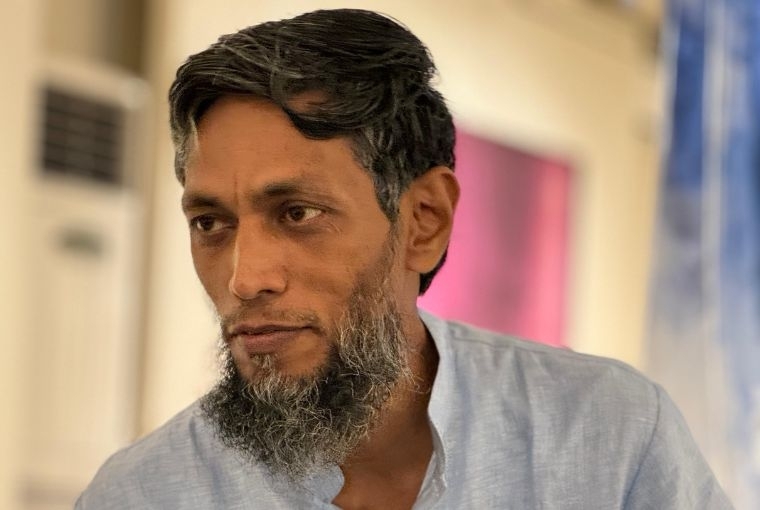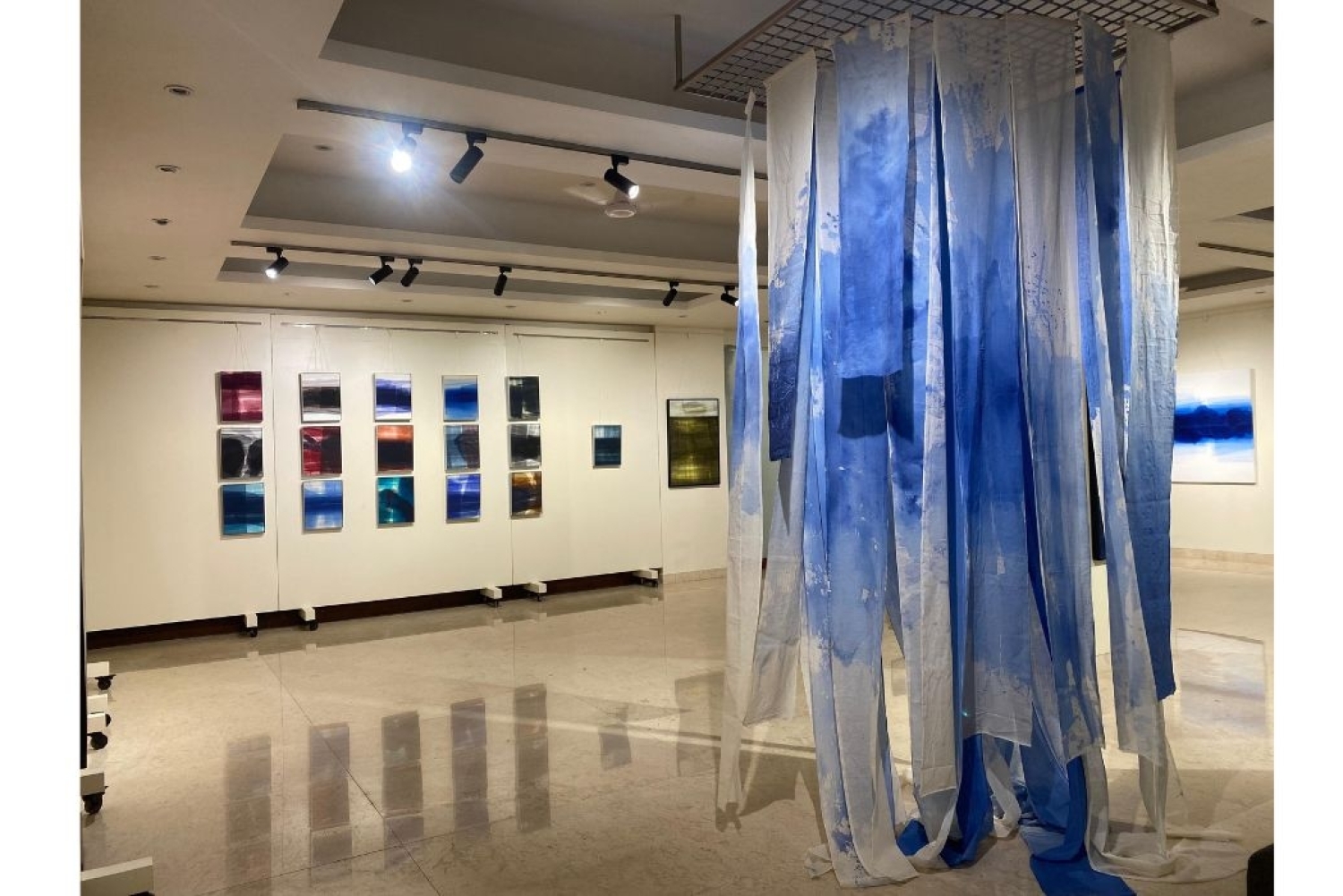

Mukhtar Kazi was raised in Mumbra, a suburb of Mumbai that transformed from a village to a city after the 1992 Mumbai riots, during which many Muslim families fled. Growing up in an environment where safety and functionality took precedence over aesthetics, Mukhtar nevertheless found beauty in the chaos around him. As a self-taught painter, he began to explore the serene qualities of light through his art.
Mukhtar was always attracted to visuals and illustrations. As a kid, he would copy elements from illustrated alphabet books. When he entered primary school, he discovered his talent for art and his ability to assist his classmates. The mixture of various cultures and religions across the coast has also greatly influenced his work. ‘A cloud of influences exists in my practice, from the architecture, cuisine, language, folklore and religion on these coasts. The people of the sea — the Konkanis of Maharashtra — have produced great artists, such as Abdul Aziz Raiba, A.A. Almelkar, and among them, I am the first to pursue abstraction.’
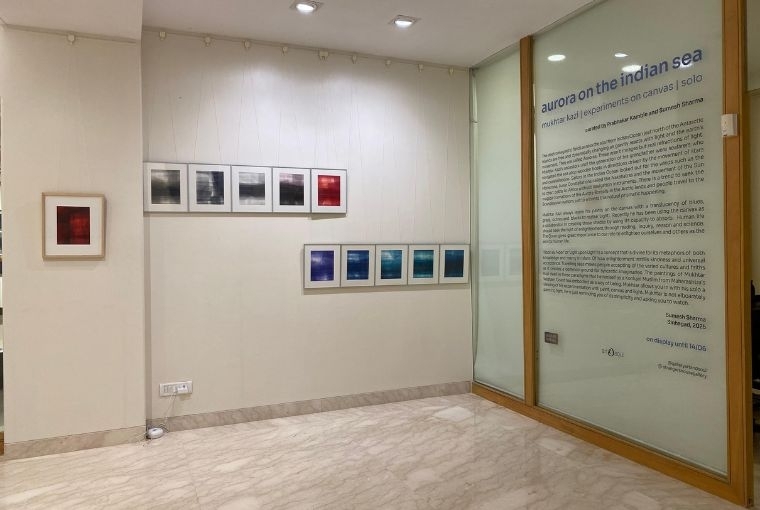
Before he delved into the world of abstract art, Mukhtar spent his time in Mumbai as an artist under signboard painters such as Abdul Rahman Ansari, slowly working his way up. However, after losing his grandfather in 1996, his family went through a very difficult period, made worse by financial insecurity. In 2002, Mukhtar found himself in the art department of an interior decoration company in Riyadh. 'I excelled in the trompe l'oeil style of mural painting where I executed large scale paintings of the sky, Palmyra ruins of Syria, Greco-Roman pillars, and Egyptian frescoes on the walls of the palaces of Riyadh. Saudi then was just opening up to art, the use of Renaissance-based techniques to accentuate by using light in the shades allowed me to excel in the metier.’ Known for his skill and speed in completing projects, his company was reluctant to let him go. However, in 2006, Mukhtar returned to Mumbai and began his exploration of abstraction and landscape painting.
His latest collection, Aurora on the Indian Sea, is a continuation of his exploration of and experiments with light, especially that which shines on the coasts he grew up on. ‘We often talk of the Aurora Borealis or the Northern Lights, which people travel to the Scandinavian countries to see and experience. When traversing the seas, my grandfather and his friends would tell me of the mirages that they would witness, made by the refraction of light on the surface of the deep blue of the Indian Ocean. I have never witnessed them, but I wish to engage with them in my imagination.’
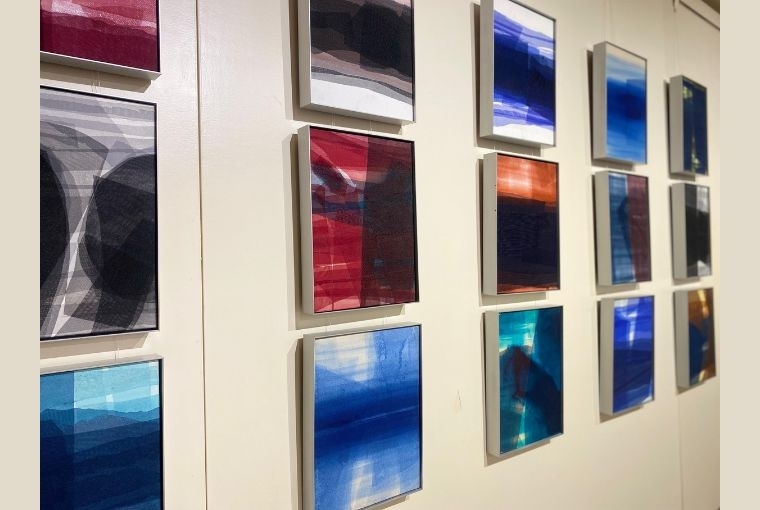
Along with painting, the collection features the use of fabric, specifically a raw linen cotton cloth called manjarpatta. The use of manjarpatta allowed the shading in Mukhtar’s works to take on a deeper hue, making the light more prevalent. However, this was not the only motivation behind including the fabric in his work. ‘Using manjarpatta is how I pay homage to my mother, Ishrat Kazi, who hails from Bhiwandi. Bhiwandi is Mumbra's neighbouring city and a place where power looms produce manjarpatta, a canvas cotton linen used by most artists to paint. This cloth is intrinsic in my identity and even though my works are abstract they are deeply political.’ His most recent addition to the collection is a series created through the use of gauze. A specific type of cotton, along with a fine weaving technique, is used to make the transparent net material, generally used to treat cuts and wounds. One of the trades carried out between India and the West was that of gauze, made with silks which were likely transported along the Red Sea by Mukhtar’s ancestors.
Aligned with his notion of making political art, Mukhtar also connects the word “gauze” to its origins from the name “Gaza.” ‘I see it as a tribute to the lives lost in Gaza. Gauze, an Italian word, is drawn from Gaza, which was reportedly famous for its weavers who would weave fine gauze from the staple cotton that was farmed near the River Nile. Tragically, the material that covered the many wounds across history and their place of origin is now devastated by war. In modern times, media frenzies lead to a dissociation with the human pain of wars. Pacifism is a very long-held tradition in India specially for those who live by the sea where interactions across cultures are a norm.’ Mukhtar’s use of fabric in his work is not merely an aesthetic decision, but rather a symbolic gesture of solidarity in a time when he believes most of us are only bystanders watching the tragic events in the world unfold.
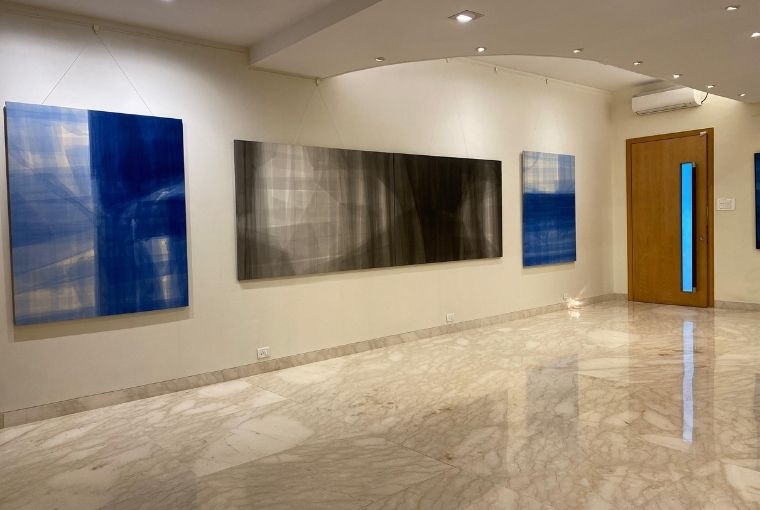
Mukhtar’s current exhibition in Gallery Art & Soul also features an installation, a kinetic sculpture that is made to move with the wind. ‘Across Bhiwandi and Mumbra, we see people dying cloth. This act of drying has a prismatic effect. Subconsciously my colouring of cloth is somewhere in echo with these techniques. I thus suspend long rolls of linen dyed in indigo to create a similar effect.’ The exhibition had its preview with Mukhtar and curator Sumesh Sharma on May 21st. The exhibition will continue until the 14th of June in Gallery Art & Soul in Worli, Mumbai.
Words Ayushie Shahane
30.05.2025
